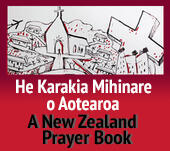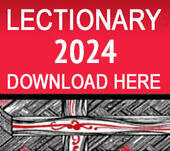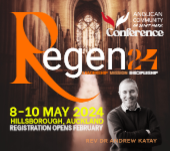For the ChristChurch Cathedral, the Anglican Diocese of Christchurch, Church Property Trustees (CPT) and the wider community, the damage to the ChristChurch Cathedral from the Canterbury earthquakes is heart breaking. The ChristChurch Cathedral was a place of enormous spiritual significance and heritage for the Anglican Diocese. Having to make decisions on the future of the Cathedral is one of the hardest challenges CPT has ever had to face. Since February 2011, the Diocese has suffered total loss or damage to 248 of its 280 parish and commercial properties.
CPT holds and administers the property and funds of the Anglican Diocese of Christchurch, which stretches from Hanmer Springs in the north to Waimate, Twizel and Haast in the south, and its parishes. Membership of CPT comprises the Bishop Victoria Matthews and eight trustees, who are members of the Church elected by the Synod. Synod is the governing body of the Christchurch Diocese where reports are received to allow representatives to debate and vote on key Diocesan issues.Church Property Trustees make decisions by vote and while the Bishop chairs the meetings, she neither has veto nor does she usually cast a vote. It is usual to have unanimity in the voting. This means no one person can decide on the fate of the Cathedral nor can Bishop Victoria Mathews exercise any “personal agenda”, as she has been accused of, to stop the reinstatement of the Cathedral. For six years CPT has been striving tirelessly to find a workable solution on the future of the Cathedral and has always said that it is committed to a cathedral in the Square. It shares the frustration many feel over the lack of progress.
There has been recent commentary that the Church and CPT have somehow frustrated recent negotiations with the Government. In an opinion piece published by The Press last week, Philip Burdon, representing the Great Christchurch Buildings Trust (GCBT), went so far as to say: “We have all been victims of sham negotiations and that the private ambition of the relevant Church leadership has always been to oppose restoration of the Cathedral.” Mr Burdon is not correct. The Trustees were fully committed to good faith engagement with the Government and rescinded CPT’s standing resolution to deconstruct the Cathedral.This earlier key decision made a commitment to building a contemporary cathedral in the Square. The decision had been based on numerous engineering, costing, risk and other professional evaluations for which CPT sought advice for different options. All key reports were made public. The decision to build a contemporary cathedral in the Square was challenged in the courts by GCBT and led to three years of CPT defending its decision. During this time, in May 2013, CPT asked the public which design options for ChristChurch Cathedral it would prefer. More than 800 people attended public forums, the website had more than 14,000 unique visitors, and more than 3,800 votes and comments were received. A contemporary design for the future cathedral was favoured by respondents.
In June 2014, the High Court lifted the stay it issued in November 2012 on deconstruction of the Cathedral. This meant CPT could continue with its plan to progress the idea of building a contemporary cathedral in the Square. Although there would be significant consenting issues, a beautiful and highly functional inspirational and contemporary cathedral, incorporating features and materials from the old cathedral, could be built within the $40 million of cathedral insurance funds then available.
However, in May 2015 CPT’s decision to build a contemporary cathedral was paused following a request from the GCBT to further discuss engineering and costs of a rebuild. At that meeting, GCBT’s experts agreed with CPT’s advice that the approximate cost of a rebuild would be approximately $100 million (not $67 million as GCBT had been publicly claiming), that base isolation is preferable, and the rebuild project would take approximately seven years.
CPT approached the government and suggested it might like to become involved. The Crown decided to appoint Miriam Dean QC to assess the situation. In a previous conversation with Minister Brownlee, the Bishop and the Trustees present explained very clearly that they believed CPT might do well to move towards a compromise – a build of old and new materials despite the Diocese and CPT stating it had a preference for a contemporary build. The Trustees were open to reinstatement as long as when completed the project did not leave the Diocese or CPT in debt. In particular, it was highlighted that CPT could only commit $30 million as it needed significant endowments to pay for the maintenance of such an expensive building and also to cover the cost of full replacement insurance, which is estimated at up to $360k a year.
In January 2016, CPT’s decision to build a contemporary cathedral was again paused, following an approach from the Government to review the feasibility of reinstatement. As mentioned, CPT committed to good faith engagement and rescinded its standing resolution to deconstruct the Cathedral. The Government announced a Cathedral Working Group, however its appointment and the agreement to the Terms of Reference was delayed for several months due to the Minister’s heavy schedule. CPT was then concerned about the delay in the timing as it had committed to making an announcement about a way forward by the end of April 2016; in fact that was when the working group was confirmed by the Crown. The Cathedral Working Group’s report confirmed CPT’s advice that the cost of reinstatement (rebuild) was approximately $104 million (plus $4 million fundraising costs), base isolation is preferable, and reinstatement would take approximately seven years.
CPT then agreed to a Government request to negotiate a funding and delivery model to reinstate the Cathedral. In late December 2016, CPT believed that an agreement was in place and were ready to sign. However in November we had the Kaikoura 7.8 earthquake and the following month the Prime Minister resigned. These and other developments that occurred may have led those representing the Crown to re-assess their offer. Hence on 21 December 2016, the offer on the table was changed to an entirely different document – a Statement of Principles.
This brings us to the present, with an offer of a grant from the Crown of $10 million and a loan of $15 million towards potential reinstatement. CPT has clearly said that to leave a Bishop and Diocese with a $15 million loan is unacceptable.
More importantly there is the need to fundraise as much as a further $56 million in order to complete the project of reinstatement. The policy being followed for all of the buildings in Trust with CPT is that the money must be in hand before the repair or build begins. Fund-raising efforts by the Great Christchurch Buildings Trust report $15 million intentions, but no pledges have been presented or seen. In the meantime, CPT continues to assess the Government’s offer.
Some people have argued that CPT has the means to fund the shortfall and fund the insurance and running costs of the reinstated Cathedral. But, CPT simply cannot do this as it holds no assets in its own right. It holds the assets in trust for the Diocesan and parish mission and ministry – and must ensure that any potential reinstatement does not weaken the wider mission of the church.
GCBT claims that opinion polls consistently supported reinstatement. This is not the case as proven in the consultation undertaken in 2013. However, to give us up-to-date information, CPT has engaged an independent research firm to complete a community survey to determine Christchurch residents’ opinion on reinstatement and their appetite to contribute to fundraising. Once the survey results are known they will be made public.
CPT anticipates soon being able to give the government an answer to its offer.Gavin Holley is the General Manager of the Anglican Diocese of Christchurch’s Church Property Trustees.
For the ChristChurch Cathedral, the Anglican Diocese of Christchurch, Church Property Trustees (CPT) and the wider community, the damage to the ChristChurch Cathedral from the Canterbury earthquakes is heart breaking. The ChristChurch Cathedral was a place of enormous spiritual significance and heritage for the Anglican Diocese. Having to make decisions on the future of the Cathedral is one of the hardest challenges CPT has ever had to face. Since February 2011, the Diocese has suffered total loss or damage to 248 of its 280 parish and commercial properties.
CPT holds and administers the property and funds of the Anglican Diocese of Christchurch, which stretches from Hanmer Springs in the north to Waimate, Twizel and Haast in the south, and its parishes. Membership of CPT comprises the Bishop Victoria Matthews and eight trustees, who are members of the Church elected by the Synod. Synod is the governing body of the Christchurch Diocese where reports are received to allow representatives to debate and vote on key Diocesan issues.
Church Property Trustees make decisions by vote and while the Bishop chairs the meetings, she neither has veto nor does she usually cast a vote. It is usual to have unanimity in the voting. This means no one person can decide on the fate of the Cathedral nor can Bishop Victoria Mathews exercise any “personal agenda”, as she has been accused of, to stop the reinstatement of the Cathedral.
For six years CPT has been striving tirelessly to find a workable solution on the future of the Cathedral and has always said that it is committed to a cathedral in the Square. It shares the frustration many feel over the lack of progress.
There has been recent commentary that the Church and CPT have somehow frustrated recent negotiations with the Government. In an opinion piece published by The Press last week, Philip Burdon, representing the Great Christchurch Buildings Trust (GCBT), went so far as to say: “We have all been victims of sham negotiations and that the private ambition of the relevant Church leadership has always been to oppose restoration of the Cathedral.” Mr Burdon is not correct. The Trustees were fully committed to good faith engagement with the Government and rescinded CPT’s standing resolution to deconstruct the Cathedral.
This earlier key decision made a commitment to building a contemporary cathedral in the Square. The decision had been based on numerous engineering, costing, risk and other professional evaluations for which CPT sought advice for different options. All key reports were made public.
The decision to build a contemporary cathedral in the Square was challenged in the courts by GCBT and led to three years of CPT defending its decision. During this time, in May 2013, CPT asked the public which design options for ChristChurch Cathedral it would prefer. More than 800 people attended public forums, the website had more than 14,000 unique visitors, and more than 3,800 votes and comments were received. A contemporary design for the future cathedral was favoured by respondents.
In June 2014, the High Court lifted the stay it issued in November 2012 on deconstruction of the Cathedral. This meant CPT could continue with its plan to progress the idea of building a contemporary cathedral in the Square. Although there would be significant consenting issues, a beautiful and highly functional inspirational and contemporary cathedral, incorporating features and materials from the old cathedral, could be built within the $40 million of cathedral insurance funds then available.
However, in May 2015 CPT’s decision to build a contemporary cathedral was paused following a request from the GCBT to further discuss engineering and costs of a rebuild. At that meeting, GCBT’s experts agreed with CPT’s advice that the approximate cost of a rebuild would be approximately $100 million (not $67 million as GCBT had been publicly claiming), that base isolation is preferable, and the rebuild project would take approximately seven years.
CPT approached the government and suggested it might like to become involved. The Crown decided to appoint Miriam Dean QC to assess the situation. In a previous conversation with Minister Brownlee, the Bishop and the Trustees present explained very clearly that they believed CPT might do well to move towards a compromise – a build of old and new materials despite the Diocese and CPT stating it had a preference for a contemporary build. The Trustees were open to reinstatement as long as when completed the project did not leave the Diocese or CPT in debt. In particular, it was highlighted that CPT could only commit $30 million as it needed significant endowments to pay for the maintenance of such an expensive building and also to cover the cost of full replacement insurance, which is estimated at up to $360k a year.
In January 2016, CPT’s decision to build a contemporary cathedral was again paused, following an approach from the Government to review the feasibility of reinstatement. As mentioned, CPT committed to good faith engagement and rescinded its standing resolution to deconstruct the Cathedral. The Government announced a Cathedral Working Group, however its appointment and the agreement to the Terms of Reference was delayed for several months due to the Minister’s heavy schedule. CPT was then concerned about the delay in the timing as it had committed to making an announcement about a way forward by the end of April 2016; in fact that was when the working group was confirmed by the Crown. The Cathedral Working Group’s report confirmed CPT’s advice that the cost of reinstatement (rebuild) was approximately $104 million (plus $4 million fundraising costs), base isolation is preferable, and reinstatement would take approximately seven years.
CPT then agreed to a Government request to negotiate a funding and delivery model to reinstate the Cathedral. In late December 2016, CPT believed that an agreement was in place and were ready to sign. However in November we had the Kaikoura 7.8 earthquake and the following month the Prime Minister resigned. These and other developments that occurred may have led those representing the Crown to re-assess their offer. Hence on 21 December 2016, the offer on the table was changed to an entirely different document – a Statement of Principles.
This brings us to the present, with an offer of a grant from the Crown of $10 million and a loan of $15 million towards potential reinstatement. CPT has clearly said that to leave a Bishop and Diocese with a $15 million loan is unacceptable.
More importantly there is the need to fundraise as much as a further $56 million in order to complete the project of reinstatement. The policy being followed for all of the buildings in Trust with CPT is that the money must be in hand before the repair or build begins. Fund-raising efforts by the Great Christchurch Buildings Trust report $15 million intentions, but no pledges have been presented or seen. In the meantime, CPT continues to assess the Government’s offer.
Some people have argued that CPT has the means to fund the shortfall and fund the insurance and running costs of the reinstated Cathedral. But, CPT simply cannot do this as it holds no assets in its own right. It holds the assets in trust for the Diocesan and parish mission and ministry – and must ensure that any potential reinstatement does not weaken the wider mission of the church.
GCBT claims that opinion polls consistently supported reinstatement. This is not the case as proven in the consultation undertaken in 2013. However, to give us up-to-date information, CPT has engaged an independent research firm to complete a community survey to determine Christchurch residents’ opinion on reinstatement and their appetite to contribute to fundraising. Once the survey results are known they will be made public.
CPT anticipates soon being able to give the government an answer to its offer.
Gavin Holley is the General Manager of the Anglican Diocese of Christchurch’s Church Property Trustees.

















Comments
Log in or create a user account to comment.